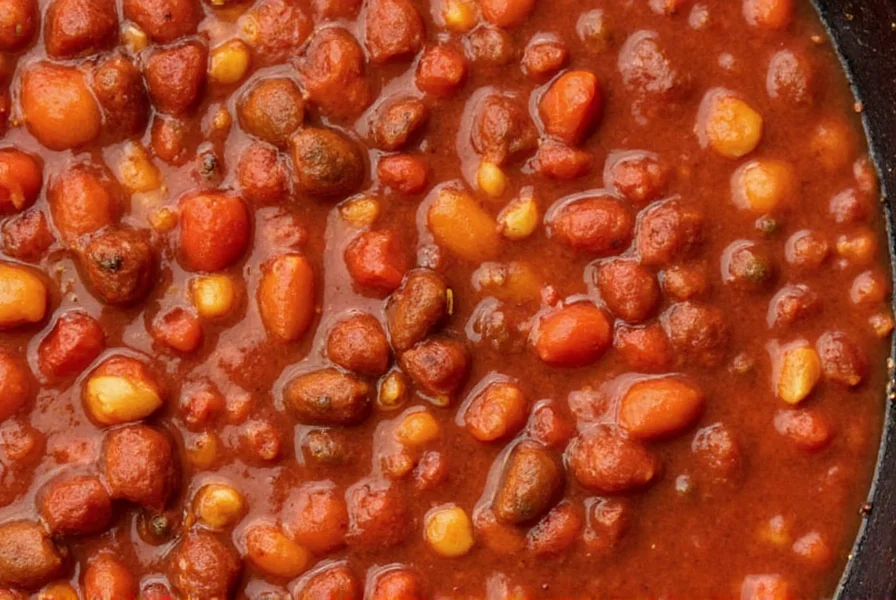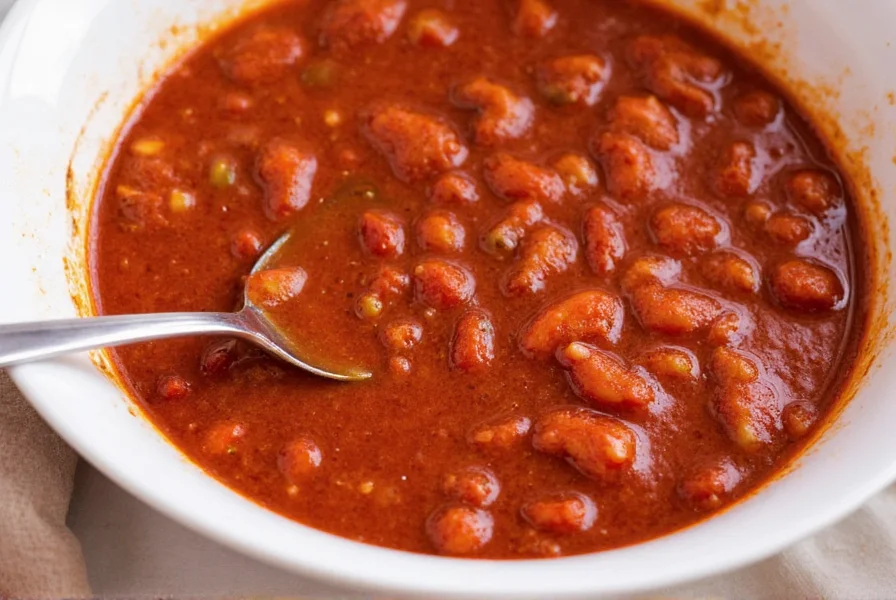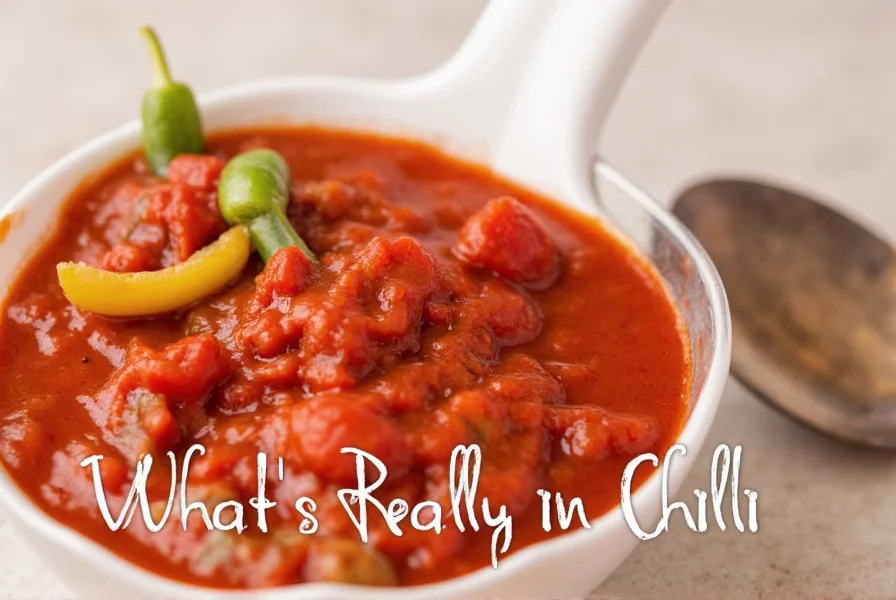When exploring what goes into a proper bowl of chili, it's essential to distinguish between chili the dish and chili the pepper. This article focuses on the beloved American stew known as chili con carne, not the individual pepper variety. Understanding the authentic ingredients in chili helps both novice cooks and seasoned chefs create more flavorful, regionally appropriate dishes.
The Foundation of Authentic Chili
At its core, traditional chili con carne is a meat-based stew with deep roots in Texas and Mexican-American culinary traditions. The simplest authentic versions contain surprisingly few ingredients, focusing on quality rather than quantity. The debate over what constitutes "true" chili has raged for generations, with regional variations creating distinct ingredient profiles.
Essential Ingredients in Traditional Chili Recipes
Authentic chili recipes build flavor through carefully selected components rather than overwhelming the palate with too many elements. The foundation consists of:
- Meat - Typically beef (chuck roast or ground beef), though some variations use venison, pork, or game meats
- Chili peppers - Dried ancho, guajillo, or New Mexico chilies form the flavor base, not just heat source
- Onions and garlic - Essential aromatics that build flavor complexity
- Spices - Primarily cumin, with oregano, coriander, and black pepper
- Liquid - Usually beef broth or water, sometimes with a touch of vinegar for brightness
Contrary to popular belief, tomatoes are actually a point of contention among chili purists. Many traditional Texas recipes omit tomatoes entirely, while other regional styles incorporate them as a key ingredient.
| Ingredient Category | Traditional Texas Style | Modern American Style | Vegetarian Alternative |
|---|---|---|---|
| Primary Protein | Beef (cubed or ground) | Beef (often ground) | Lentils, beans, or textured vegetable protein |
| Beans | Never included | Common (kidney, pinto) | Essential component |
| Tomatoes | Rarely used | Common (paste, diced) | Common |
| Chili Peppers | Dried varieties (ancho, guajillo) | Often chili powder | Dried or fresh chilies |
The Great Beans Debate in Chili
Perhaps the most contentious issue in chili ingredient discussions is whether beans belong. Traditional Texas chili con carne strictly excludes beans, with purists arguing they dilute the meat flavor and texture. The International Chili Society competition rules explicitly prohibit beans in the traditional chili category.
However, many home cooks and regional variations enthusiastically include beans. In fact, the addition of beans became popular during the Great Depression as an affordable way to stretch meat. Modern American chili often features kidney beans, pinto beans, or black beans as standard ingredients.
Understanding this historical context helps explain why ingredient choices matter in creating authentic regional styles rather than just following generic recipes.
Regional Variations and Their Distinct Ingredients
Chili recipes vary dramatically across North America, each with signature ingredients:
Texas Red
The original chili style features cubed beef, dried chili peppers, garlic, cumin, and sometimes a touch of coffee or chocolate for depth. No beans, no tomatoes—just meat and spices simmered for hours.
Cincinnati Chili
This unique style includes unexpected ingredients like cinnamon, allspice, and sometimes chocolate or cocoa powder. It's typically served over spaghetti with shredded cheddar cheese—a combination that surprises traditional chili enthusiasts.
New Mexico Style
Focuses on fresh or dried New Mexico chilies as the star ingredient, often with minimal additional spices to showcase the pepper's flavor. Pork sometimes replaces beef in regional variations.
Vegetarian and Vegan Chili
Modern adaptations use ingredients like black beans, sweet potatoes, mushrooms, and textured vegetable protein to create hearty meat alternatives while maintaining the essential chili flavor profile.

Common Ingredient Mistakes to Avoid
Even experienced cooks make ingredient errors when preparing chili. The most frequent issues include:
- Over-reliance on chili powder - While convenient, pre-made chili powder lacks the complexity of toasted, ground dried chilies
- Insufficient cooking time - Authentic chili requires slow simmering (3+ hours) for flavors to meld properly
- Incorrect meat selection - Lean ground beef often results in dry chili; chuck roast with marbling creates better texture
- Adding ingredients at wrong time - Delicate spices like oregano should be added later in cooking
Ingredient Quality Considerations
The quality of your ingredients dramatically affects the final product. For authentic chili flavor:
- Toast dried chili peppers before rehydrating to unlock deeper flavors
- Use freshly ground cumin rather than pre-ground spice
- Select high-quality beef with good marbling
- Consider making your own chili powder blend from specific dried chilies
These small upgrades transform ordinary chili into something extraordinary without requiring exotic ingredients or complicated techniques.
Modern Interpretations and Creative Variations
While traditionalists might balk, contemporary chefs have expanded chili ingredients in exciting ways:
- Umami boosters - A small amount of fish sauce or soy sauce enhances depth without being detectable
- Fruit additions - Some California-style recipes include mango or pineapple for sweet contrast
- Smoke elements - Chipotle peppers or a touch of liquid smoke add complexity
- Acid balance - A splash of apple cider vinegar at the end brightens rich flavors

Building Your Perfect Chili
When creating your own chili recipe, consider these guidelines for ingredient selection:
- Start with high-quality meat as your foundation
- Select 2-3 complementary chili varieties for layered heat and flavor
- Build aromatics with onions, garlic, and sometimes celery
- Add spices toasted and ground fresh when possible
- Simmer slowly to develop complex flavors
- Adjust seasoning at the end for perfect balance
Remember that authentic chili isn't about piling on ingredients but creating harmony between a select few quality components. Whether you prefer strict Texas tradition or modern interpretations, understanding the role of each ingredient helps you create better chili.











 浙公网安备
33010002000092号
浙公网安备
33010002000092号 浙B2-20120091-4
浙B2-20120091-4